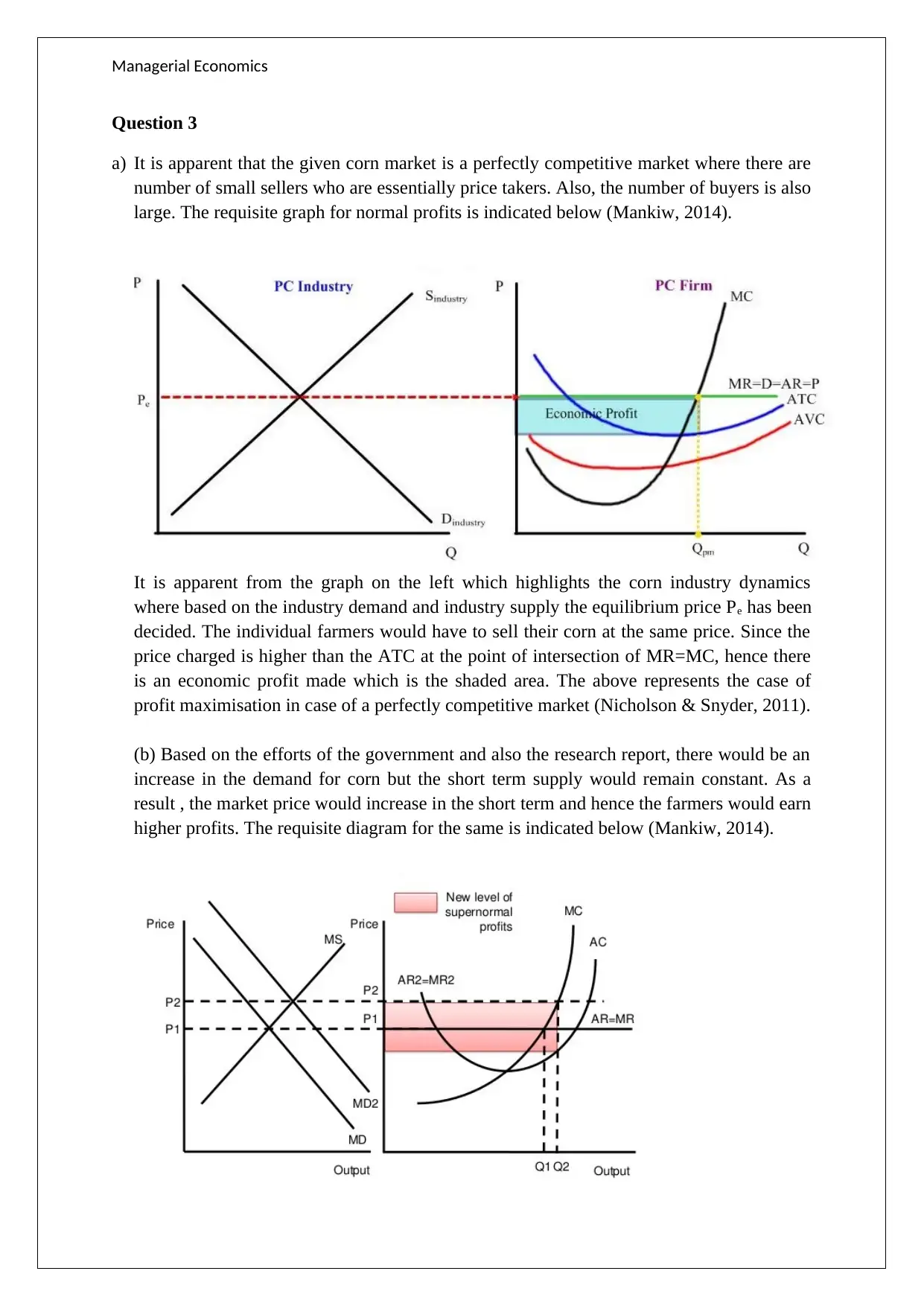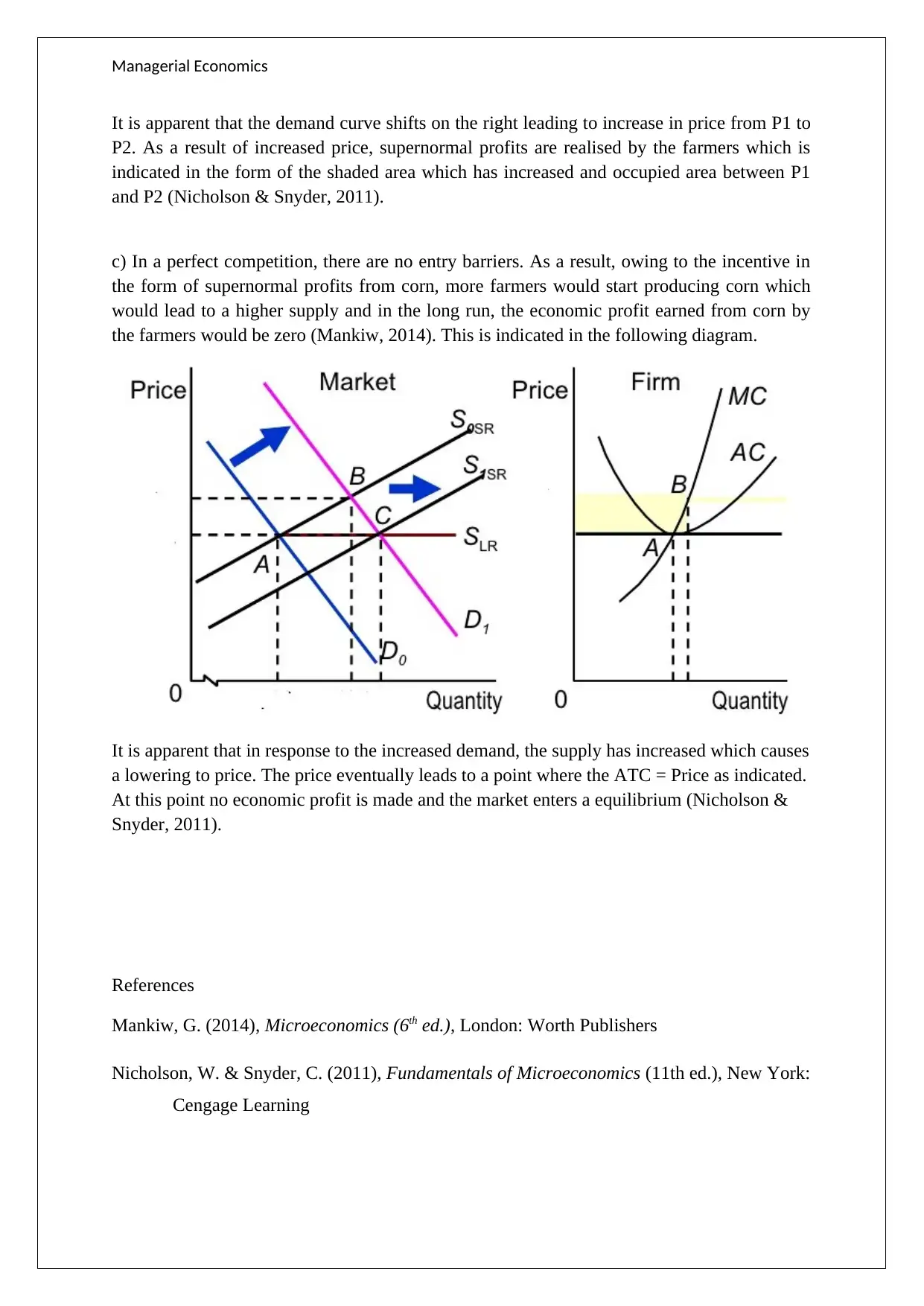Managerial Economics: Corn Market Analysis Report, University of XYZ
VerifiedAdded on 2020/02/24
|2
|467
|98
Report
AI Summary
This report provides an analysis of the corn market within the framework of managerial economics. It examines the market's characteristics, including its classification as a perfectly competitive market with numerous small sellers and buyers. The report utilizes graphical representations to illustrate market dynamics, including the determination of equilibrium price and the conditions for profit maximization. It also explores the impact of increased demand on the market, leading to higher short-term profits for farmers. Furthermore, the report discusses the long-run implications of these profits, considering the entry of new producers and the eventual convergence to a state of zero economic profit. The analysis incorporates references to key economic texts to support its findings.
1 out of 2








![[object Object]](/_next/static/media/star-bottom.7253800d.svg)